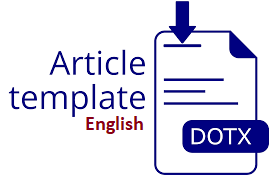Penerapan Metode Elgamal Untuk Mengamankan Teks Pada File Dokumen Word
DOI:
https://doi.org/10.30865/klik.v4i2.1277Keywords:
Electrical properties; DSSC Performance; Au nanoparticles; Four point probeAbstract
Text that contains a lot of characters always causes problems with storage media and time speed during data transmission. Text files are files that contain information in text form. data originating from word processing documents, numbers used in calculations, names and addresses in databases are examples of input text data consisting of characters, numbers and punctuation marks. The problem is that if the text file contains important information and is stolen, the thief can exploit the stolen data into profitable information and if the data is damaged then the data owner suffers a loss. therefore it is necessary to apply security to text files. This research uses the Elgamal method for security of important text files. with security using the elgamal method, important text files have good security. This algorithm is based on the discrete logarithm problem on the group ?P*. The ElGamal algorithm consists of three processes, namely the key formation process, the encryption process and the decryption process. This algorithm is a block cipher, which carries out an encryption process on plaintext blocks and produces ciphertext blocks which are then decrypted, and the results are combined back into a complete and comprehensible message. As a result of the research, it can be concluded that implementing a secret message application can secure Microsoft Word files. The result is that this application is very useful for securing documents so that their contents are not known by unauthorized people. This program produces applications using steps and formulas from the Elgamal algorithm, then changes the text content in the Microsoft Word file as input, then the Elgamal algorithm can be applied and turned into unknown codes (ciphertext). By using Visual Basic 2012 programming and then applying the algorithm or stages of Elgamal, it can result in the application of the Elgamal Method for Securing Microsoft Word Files
Downloads
References
A. Andikos, “Perancangan Aplikasi Multimedia Interaktif Sebagai Media Pembelajaran Pengenalan Hewan Pada Tk Islam Bakti 113 Koto Salak,” J. Sakinah, vol. 11, pp. 34–39, 2019.
A. Fauzi and Y. Maulita, “Perancangan Aplikasi Keamanan Pesan Menggunakan Algoritma Elgamal Dengan Memanfaatkan Algoritma One Time Pad Sebagai Pembangkit Kunci,” JTIK (Jurnal Tek. Inform. Kaputama), vol. 1, no. 1, pp. 1–9, 2018.
N. Oktaviani and S. Sauda, “Pemodelan dan Implementasi Aplikasi Mobile Umrah Guide Menggunakan Unified Modeling Language,” J. Sains dan Inform., vol. 5, no. 2, pp. 177–18, 2019.
S. M. Hardi, D. Hamonangan, and M. Zarlis, “Implementasi Kriptografi Hibrid Dengan Algoritma Elgamal Dan Algoritma Onetime Pad (Otp) Dalam Pengamanan File Audio Berbasis Desktop,” TECHSI-Jurnal Tek. Inform., vol. 10, no. 2, pp. 129–140, 2018.
T. Zebua, “Pengamanan Data Teks Dengan Kombinasi Cipher Block Chaining dan LSB-1,” 2018.
J. S. B. Tambunan, M. I. Sukmana, and S. N. Siregar, “Penyandian Pesan Berdasarkan Algoritma RC5 dan El-Gamal,” Sink. J. dan Penelit. Tek. Inform., vol. 2, no. 2, pp. 1–5, 2018.
R. P. Sugijanto, H. N. Palit, and L. W. Santoso, “Implementasi Sistem Inventori pada Prodi Informatika Universitas Kristen Petra,” J. Infra, vol. 8, no. 2, pp. 223–227, 2020.
J. Susilo, T. Pujiatna, and S. Firmasari, “Pembinaan Tata Bahasa dan Bentuk Surat-Menyurat Indonesia Berbasis Microsoft di Desa Mandala, Dukupuntang Kabupaten Cirebon,” (Jurnal Pengabdi. Dan Pemberdaya. Masyarakat), vol. 4, no. 1, pp. 173–177, 2020.
Y. Sari, W., Maulita and A. Fauzi, “Analisa Algoritma Elgamal Dalam Penyandian Data Sebagai Keamanan Database,” J. Inform. Kaputama, vol. 2, no. 1, pp. 60–70, 2018.
H. Santoso and M. Fakhriza, “erancangan Aplikasi Keamanan File Audio Format Wav (Waveform) Menggunakan Algoritma Rsa,” Algoritm. J. Ilmu Komput. Dan Inform., vol. 2, no. 1, pp. 47–54, 2018.
T. Rahmasari, “Perancangan Sistem Informasi Akuntansi Persediaan Barang Dagang Pada Toserba Selamat Menggunakan Php Dan Mysql.,” Account. Inf. Syst. Inf. Technol. Bus. Enterp., vol. 4, no. 1, pp. 411–425, 2019.
H. Santoso and M. Fakhriza, “Perancangan Aplikasi Keamanan File Audio Format Wav (Waveform) Menggunakan Algoritma Rsa,” Algoritm. J. Ilmu Komput. Dan Inform., vol. 2, no. 1, pp. 47–54, 2018.
Kusrini, “Konsep dan Aplikasi Sistem Pendukung Keputusan,” 2019.
T. Wijaya, Analisis Data Penelitian Menggunakan SPSS. Yogyakarta: CV Andi Offset, 2009.
H. Ghodang, Path analysis (analisis jalur). Medan: PT Penerbit Mitra Grup, 2020.
V. Jainuri and T. Sukmono, “Optimization of Inventory Costs Using the Continuous Review System (CRS) Method in Controlling the Need for Raw Materials for the Crimean Industry,” Acad. Open, vol. 5, pp. 1–14, 2021, doi: 10.21070/acopen.5.2021.2205.
I. Magdalena, A. Salsabila, D. A. Krianasari, and S. F. Apsarini, “Implementasi Model Pembelajaran Daring Pada Masa Pandemi Covid-19 Di Kelas III SDN Sindangsari III,” PANDAWA, vol. 3, no. 1, pp. 119–128, 2021.
S. Calderwood, K. McAreavey, W. Liu, and J. Hong, “Context-dependent Combination of Sensor Information in Dempster-Shafer Teory for BDI,” Knowl Syst 51, 2016, doi: 10.007/s10115-016-0978-0.
R. E. Putri, “Perancangan Aplikasi Rekam Medis Menggunakan Bahasa Pemograman VB. Net 2010,” J. Tek. dan Inform., vol. 5, no. 1, pp. 49–55, 2018.
S. Sumanto, “Metode AHP Dan SAW Untuk Penerimaan Siswa Baru (Studi kasus:Sekolah Menengah Kejuruan (SMK) Sandikta),” J I M P - J. Inform. Merdeka Pasuruan, vol. 3, no. 3, pp. 50–56, 2018, doi: 10.37438/jimp.v3i3.188.
Bila bermanfaat silahkan share artikel ini
Berikan Komentar Anda terhadap artikel Penerapan Metode Elgamal Untuk Mengamankan Teks Pada File Dokumen Word
ARTICLE HISTORY
Issue
Section
Copyright (c) 2023 Abdul Halim Hasugian, Raissa Amanda Putri, Annisa Shafira Zuhri

This work is licensed under a Creative Commons Attribution 4.0 International License.
Authors who publish with this journal agree to the following terms:
- Authors retain copyright and grant the journal right of first publication with the work simultaneously licensed under Creative Commons Attribution 4.0 International License that allows others to share the work with an acknowledgment of the work's authorship and initial publication in this journal.
- Authors are able to enter into separate, additional contractual arrangements for the non-exclusive distribution of the journal's published version of the work (e.g., post it to an institutional repository or publish it in a book), with an acknowledgment of its initial publication in this journal.
- Authors are permitted and encouraged to post their work online (e.g., in institutional repositories or on their website) prior to and during the submission process, as it can lead to productive exchanges, as well as earlier and greater citation of published work (Refer to The Effect of Open Access).
















